4 Tips to Increase Industrial and Manufacturing Safety
In asset-intensive organizations, the machines that keep business moving are critical. But, the people operating and repairing those machines are even more critical.
That’s why prioritizing construction, utilities or manufacturing safety is so important.
According to the Safety Management Group, which offers safety training and services, one work related injury costs $38,000 on average, but indirect costs can grow into the millions to offset losses.
“A safety program is overall good business,” says Doug Schumann, advisor with Safety Management Group. “The good thing about having someone focused on safety is that it helps to get you from point A to B in a safe manner that saves you money.”
Companies have every reason to develop a safety program, and this article will detail some key aspects of a successful one.
4 Keys of a Successful Safety Program
Schumann says the basic aspects of a good safety program includes identifying hazards, making comprehensive checklists, specific training and accident investigations. Here are some more details:
1. Create Checklists of All Safety Aspects
Before you can plan safety protocols around your company’s assets, equipment and facilities, you need to identify everything that could lead to a hazard.
“The first thing they do is use a checklist to determine several things,” Schumann says.
Some questions on the checklist should include:
What exact service or product does the company provide?
What types of machinery are employees exposed to and operating?
Are hazardous chemicals present in the work environment?
Are there fall risks present?
The actual list can be incredibly detailed, including fire, electrical and ergonomic hazards, so check out some sample programs from the Occupational Safety and Health Administration (OSHA) website to see the various topics that should be covered.
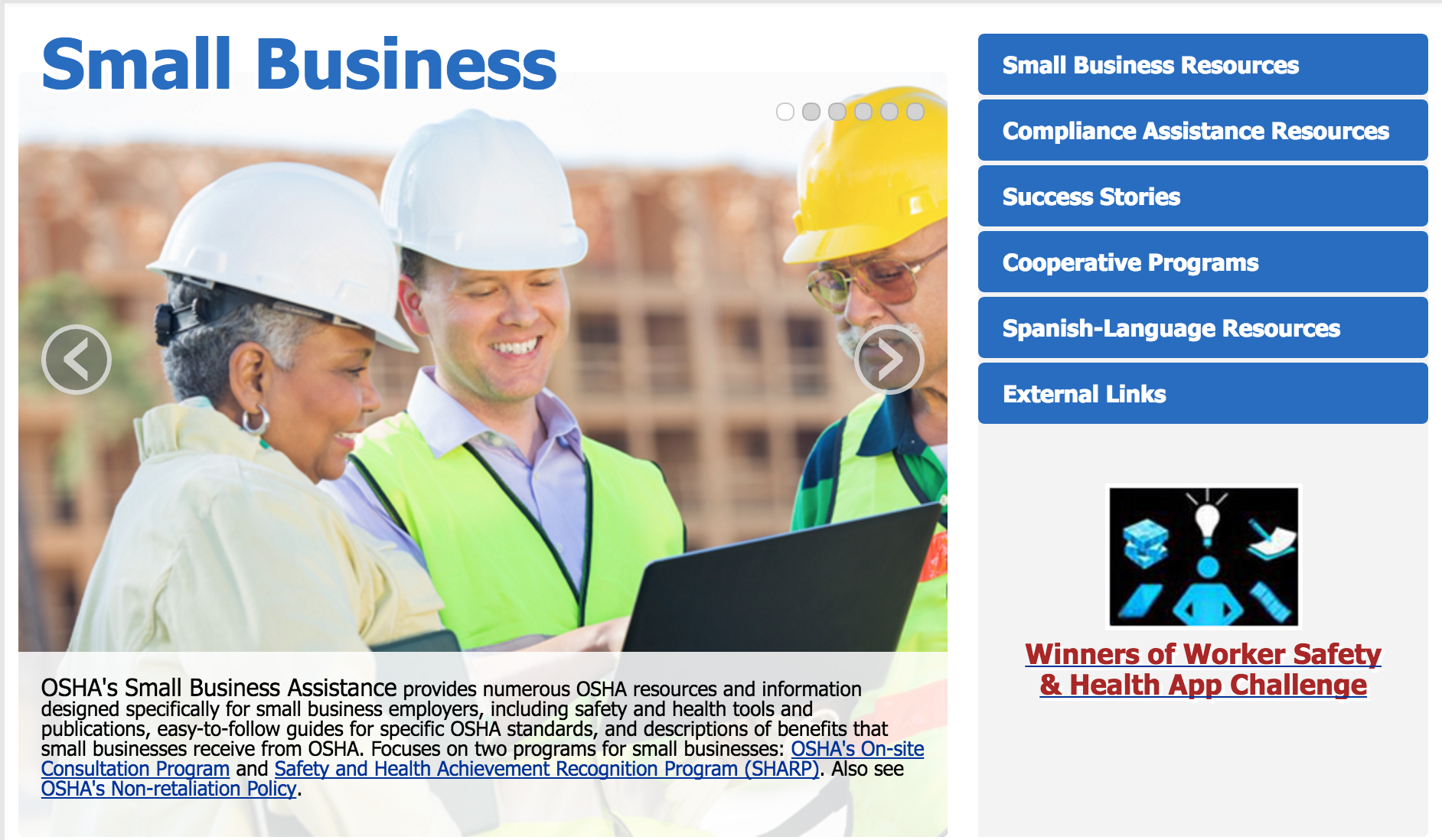
Safety resources specifically for small companies are available from OSHA
“You should identify anything that you could be exposed to,” Schumann adds. “Chemicals, for example, need a hazard communication program in place so you can know where your safety data sheets are and what the process is to use and store those chemicals.”
Then, for each category you identify, there are OSHA-certified guidelines to follow. Schumann says that these categories are generally consistent across industries, though the Safety Management Group will customize the way they are handled based on their client’s unique attributes.
2. Train Any Employee Exposed to Hazards
It’s important for anyone who will potentially be exposed to the identified hazards to have the proper safety training. Through training, you can prevent many incidents from occurring, which is the most effective way of saving money.
“There are cost savings in reduced downtime because of injuries, or in retraining people because you have to rotate them out,” Schumann says. “The overall goal is to reduce injuries.”
It’s important to address employees about the safety program in three areas:
A. Make employees and managers aware of the program and its goals. Your workers, at all levels, should be fully aware of the safety program, the reason it is in place and, most importantly, that they are all expected to contribute to a safe work environment.
B. Train employees on their specific roles in the program. Workers should know how to safely operate any machinery they would potentially work with, using manufacturer’s resources such as user manuals, as well as industry best practices. Additionally, they should be trained on how to keep their particular work environment, such as walkways or confined spaces, safe for themselves and others.
C. Train employees to identify hazards. If a worker sees an uncovered access hole in the floor of the manufacturing plant, they can ask the following questions to describe the hazard scenario:
What is the potential risk? There’s a falling hazard.
What are the consequences? A worker could be injured.
What contributed to this risk? Lack of training to close or mark open shaft.
“People not being trained properly is a very common problem,” Schumann says, mentioning a fatality at a facility when a worker entered a confined space to clean. “He wasn’t following the proper procedures to lock out a machine while you work on it, and that’s a training issue.”
Lockout/tagout (LOTO) is a common safety procedure that instructs workers to disable machines before working on them to avoid burns, electrocution or other hazards depending on the piece of equipment. OSHA offers their own specific LOTO guidelines:
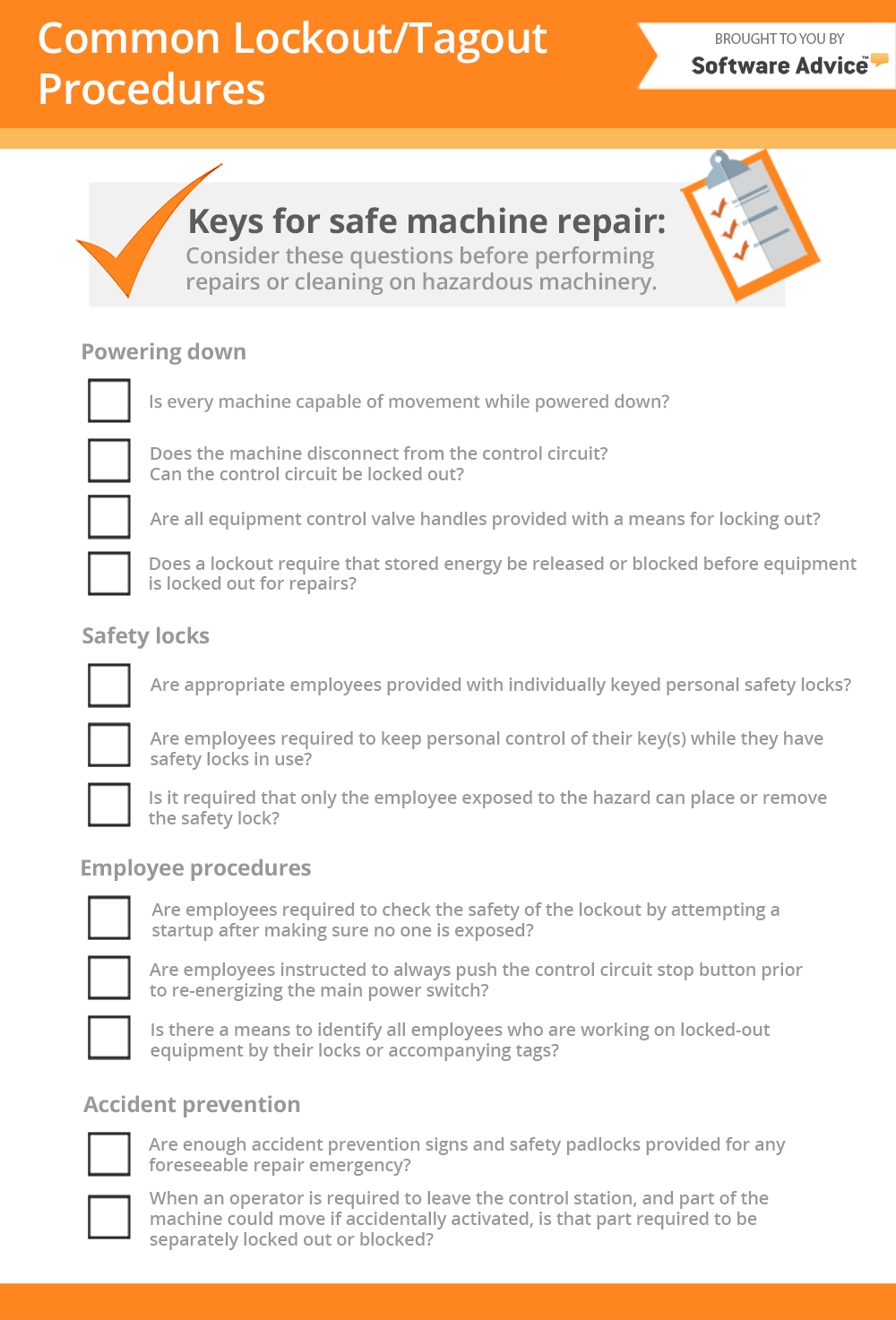
3. Place a Focus on Ergonomics
The Bureau of Labor Statistics states a third of all worker injury and illness cases are musculoskeletal disorders, due to ergonomics. Schumann says that ergonomics should be a focal point so that employees aren’t overreaching, bending improperly or lifting too much.
“You see it in auto manufacturing, where they have robots hold a windshield in place, not two guys picking it up,” he says. “It’s not just to help speed, but also to prevent people from getting hurt because no one is overexerting themselves.”
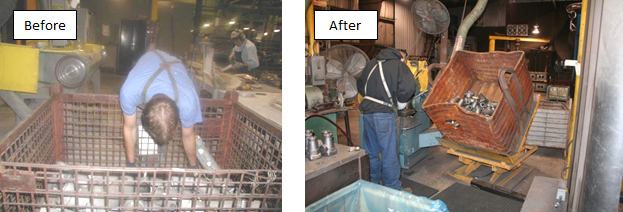
_Illustration of a damaging repetitive task (left) and the more ergonomic method that minimizes injuries.
(Source: OSHA.gov)_
For example, repetitive tasks such as bending over to pick up materials in a mine, construction site or foundry can cause back pain over time.
A safety program should include procedures to alleviate these damaging tasks, such as supplying devices that extend the worker’s reach or bringing the materials higher up.
4. Train Employees on Incident Reporting
Finally, even when accidents happen, you and your employees should be able to trace the injury back to its source so that you can address the hazard and prevent it from happening again in the future.
“You want to make sure you follow best practices for an accident investigation process,” Schumann says. “Maybe you got lucky the first time and the guy just lost the tip of his finger, but what happens if he loses an arm next time? Having a robust investigation process to figure out exactly what happened and why can save you down the line.”
Common sense can help here; Schuman says employees should find the key details of the accident immediately. As if you were gathering information for a new report, follow the five W’s:
Who is involved?
What was the accident?
When did it occur?
Where did it happen?
Why did it happen?
But don’t stop there, Schumann says. Follow through with that last question at least five times to get closer to the root of the problem:
“I fell off the ladder.”
Why?
“I reached over there to grab something and slipped.”
Why?
“I couldn’t get the ladder close enough because these tools were in the way.”
Why?
“The other contractor left their tools laying there.”
Why?
“Ok, so the other contractor left their stuff there. Let’s address that.”
That’s a simple example, but a manager could then contact the other worker who left the tools and ensure that work environments are kept tidy in the future, potentially saving thousands. Additionally, the manager can remind employees to identify hazards and notify the proper person to report it.
And with all this information stored in a system, like a maintenance management or manufacturing system, users can produce reports to identify trends and make improvements on the safety program.
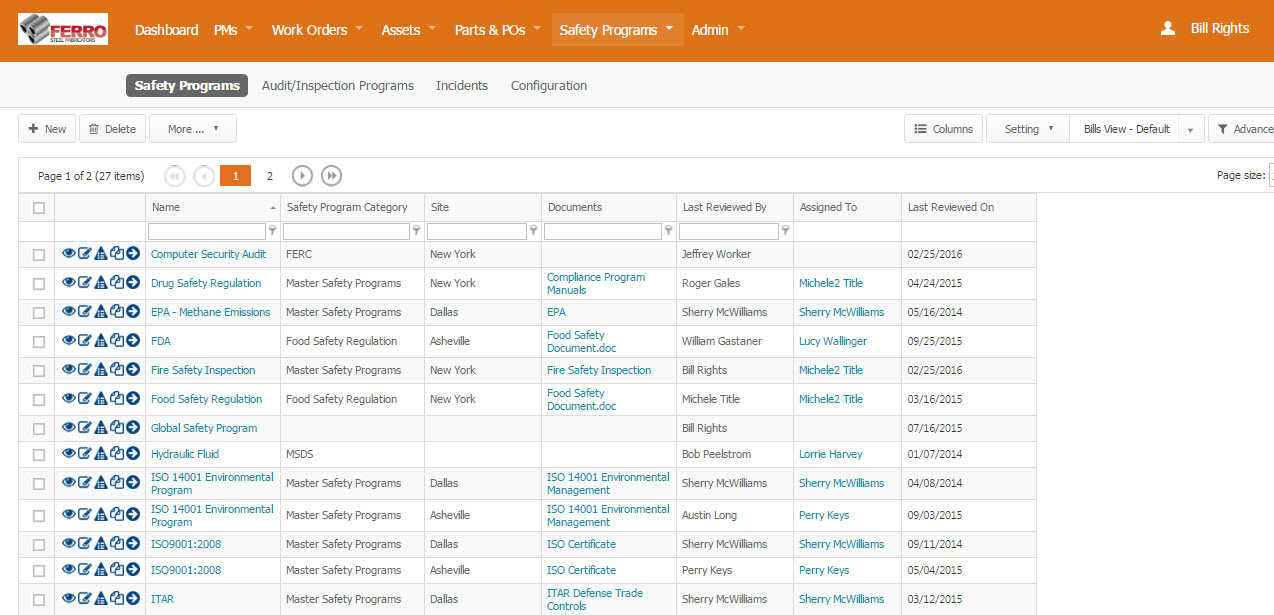
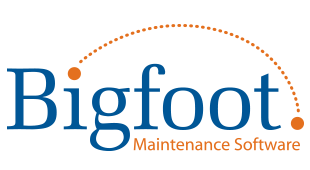
A screen from Bigfoot CMMS showing a list of active safety programs
For example, Schumann says it’s easy for managers to identify one-off safety violations, such as a construction worker not wearing proper eye protection. But after running a monthly report, you can get the true picture of your safety program effectiveness.
“Being able to see that report and seeing all these marks, it tells you how safe your employees are with a percentage,” he says. “Having that percent safe is a big help to see where we’re at, and each company can make their determination to what percentage they think is actionable.”
He adds that a culture and attitude regarding safety is a major factor in the success of a program; Employees have to feel comfortable coming to management with questions and concerns.
Recap and More Guidance
The life and cost saving benefits of a safety program are undeniable, but there are many details that will depend on your particular industry and work environment. Schumann says Safety Management Group and other entities are available to help companies implement and optimize safety, through consulting, auditing and staffing.
“If you’re a small company and you have ten employees, it’s hard to put that responsibility on one of them when they’re probably maxed out already,” he says. “You can have a company like ours come help check out if you have any hidden monsters around that you don’t even know about.”
To recap his tips:
Walk through your workplace and make a list of hazards and potential hazards.
Determine best practices for those hazards and train employees on their roles.
Identify where better ergonomics could make a repetitive task safer.
Make sure workers know how to report a potential hazard or incident to gather data over time.
For more guidance, contact me at taylorshort@softwareadvice.com.